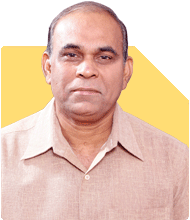I have purchased a under construction property in Aug2021 and possession is in 2024 dec.
I have sold my existing house in jan'24 and investing the full amount in the new flat can i get benifits under section 54f
Ans: Understanding Section 54F of the Income Tax Act
Thank you for sharing your query. Section 54F of the Income Tax Act, 1961, provides tax relief on long-term capital gains arising from the sale of any capital asset other than a residential house, provided the net sale consideration is reinvested in purchasing or constructing a residential house. This section aims to encourage investment in residential properties by providing tax exemptions on capital gains.
Eligibility Criteria for Section 54F
To avail the benefits under Section 54F, certain conditions must be met:
Long-Term Capital Gain: The asset sold should be a long-term capital asset.
Investment in Residential Property: The net consideration from the sale should be invested in purchasing or constructing a residential property within the specified period.
Single Residential Property: The taxpayer should not own more than one residential house property, other than the new house, on the date of transfer.
Time Frame for Investment:
Purchase: Within one year before or two years after the date of transfer.
Construction: Within three years from the date of transfer.
Your Scenario: Selling and Reinvesting in a New Property
You sold your existing house in January 2024 and plan to invest the entire amount in an under-construction property, with possession due in December 2024. Let’s evaluate how you can benefit under Section 54F.
Timeline of Events
Purchase of Under-Construction Property: August 2021
Sale of Existing House: January 2024
Possession of New Property: December 2024
Meeting the Conditions for Section 54F
Long-Term Capital Gain
Assuming the property sold in January 2024 was held for more than 24 months, the gain qualifies as a long-term capital gain, making you eligible for Section 54F benefits.
Investment in Residential Property
You plan to invest the entire sale proceeds in a new property purchased in August 2021. This new property is under construction, with possession due in December 2024. Here, the critical aspect is the timing of your investment and possession.
Assessing the Time Frame for Investment
According to Section 54F, the construction of the new property should be completed within three years from the date of sale of the original property. Since you sold your house in January 2024, the construction of your new house should be completed by January 2027. Since possession of your new house is expected in December 2024, it falls well within the stipulated three-year period, making you eligible for the exemption under Section 54F.
Calculation of Exemption
The amount of exemption under Section 54F is proportional to the investment made. If the entire sale consideration is invested, the entire capital gain is exempt. If only a part of the consideration is invested, the exemption is calculated proportionately.
Example Calculation
Let’s assume the following figures for clarity:
Sale Consideration of Existing House: Rs 50 lakhs
Cost of Under-Construction Property: Rs 60 lakhs
Capital Gain from Sale: Rs 20 lakhs
Since you are investing the full sale consideration of Rs 50 lakhs in the new property, the entire capital gain of Rs 20 lakhs is exempt under Section 54F.
Documentation and Compliance
To ensure smooth claiming of the exemption under Section 54F, maintain proper documentation, including:
Sale Deed of the Existing Property: Documenting the sale transaction.
Agreement to Sell and Purchase of New Property: Showing the reinvestment of the sale proceeds.
Proof of Construction/Completion: Possession certificate or completion certificate from the builder, indicating the date of possession.
Additional Points to Consider
Holding Period
To retain the benefits of Section 54F, the new property must be held for at least three years from the date of its acquisition or construction. If sold within this period, the capital gains exempted earlier will become taxable in the year of sale.
Multiple Properties
Ensure you do not own more than one residential property, other than the new house, on the date of transfer of the original asset. Owning multiple residential properties can disqualify you from availing the exemption under Section 54F.
Importance of Certified Financial Planner (CFP) Guidance
Navigating tax laws can be complex, and professional guidance ensures compliance and optimal tax savings. A Certified Financial Planner (CFP) can help you strategically plan your investments, ensuring maximum benefits under applicable tax laws while aligning with your long-term financial goals.
Strategic Investment Planning
While real estate investment offers tax benefits, diversifying your portfolio is crucial for balanced growth. Alongside property investments, consider the following:
Equity and Mutual Funds
Equity and mutual funds offer high growth potential, beating inflation over the long term. Actively managed funds, guided by a CFP, can provide superior returns compared to index funds due to strategic stock selection and management.
Public Provident Fund (PPF)
PPF is a risk-free investment with tax benefits under Section 80C. Regular contributions to PPF provide a stable corpus for long-term goals.
Systematic Investment Plan (SIP)
Investing in mutual funds through SIP ensures disciplined investing and benefits from rupee cost averaging, mitigating market volatility.
Evaluating Direct vs. Regular Funds
While direct funds have lower expense ratios, the expertise of a CFP in regular funds can enhance overall returns through strategic asset allocation and periodic rebalancing. This professional guidance often outweighs the cost advantage of direct funds.
Ensuring Adequate Insurance
Adequate health and life insurance coverage is crucial. It protects your family and investments from unforeseen events, ensuring financial stability.
Emergency Fund
Maintain an emergency fund covering 6-12 months of living expenses. This ensures liquidity and financial security in case of unexpected expenses or income disruptions.
Tax Planning and Compliance
Efficient tax planning enhances net returns. Utilize available tax-saving instruments and ensure compliance with tax laws to avoid penalties and maximize savings.
Final Insights
Your strategic approach to reinvesting the sale proceeds from your existing property into a new under-construction property aligns well with the provisions of Section 54F. This allows you to benefit from significant tax exemptions on long-term capital gains, ensuring compliance with the stipulated conditions.
Maintaining proper documentation, adhering to holding periods, and leveraging professional guidance from a Certified Financial Planner ensures optimal financial planning and tax efficiency. Diversifying your investments, maintaining adequate insurance, and having an emergency fund further strengthen your financial foundation.
Your commitment to informed financial decisions sets a strong foundation for achieving your long-term financial goals, ensuring a secure and prosperous future.
Best Regards,
K. Ramalingam, MBA, CFP,
Chief Financial Planner,
www.holisticinvestment.in































